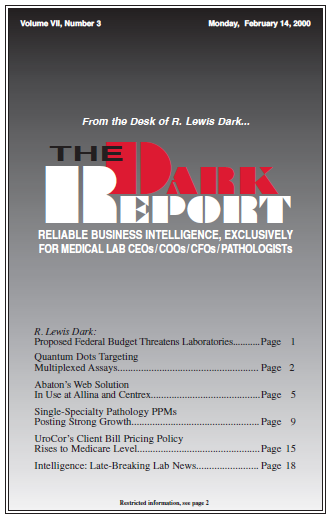CEO SUMMARY: Abaton.com was among the first companies to actually have Web-based information products linking hospital labs and physician offices. As early as 1997, the Allina Health System was working with Abaton.com to implement a laboratory test requisition/test results system using Web browsers. Centrex Clinical Labs is another Abaton client now implementing a Web-based, thin …
Abaton’s Web Solution In Use at Allina, Centrex Read More »
To access this post, you must purchase The Dark Report.


